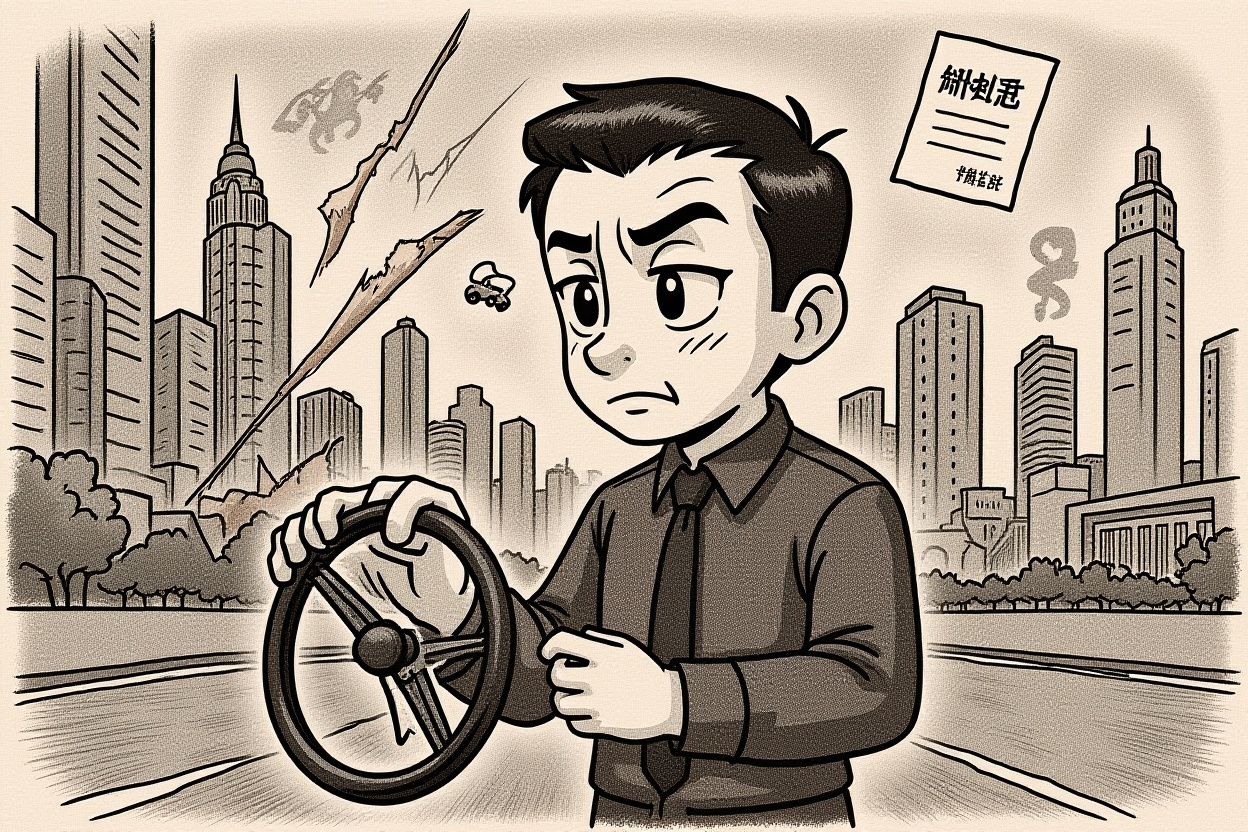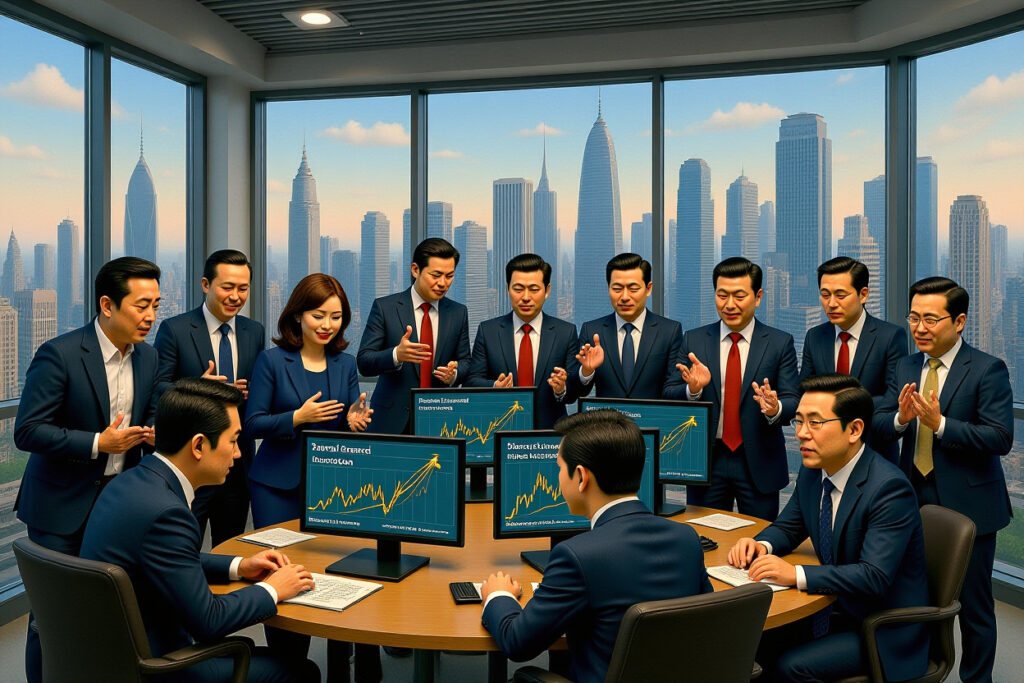The 15,000 Yuan That Toppled an Autonomous Driving Dream
In September 2025, the Nanjing Qixia District People’s Court accepted bankruptcy proceedings against Zhongzhixing Technology, once hailed as China’s next autonomous driving champion. The trigger? A mere 15,000 yuan ($2,100) labor arbitration claim that the company couldn’t pay. This symbolic amount exposed the complete financial collapse of a startup founded by Wang Jin (王劲), the former Baidu executive once celebrated as China’s autonomous driving pioneer.
Court investigations revealed the company had “insolvent assets, no operations at its registered address, unknown business premises, and unreachable management.” The downfall of this once-promising venture illustrates the brutal realities facing China’s autonomous driving sector as capital retreats from unproven business models and infrastructure-dependent technologies.
Executive Summary: Critical Takeaways
– Zhongzhixing Technology, founded by former Baidu autonomous driving head Wang Jin, enters bankruptcy proceedings over unpaid 15,000 yuan debt
– Company pursued “vehicle-road coordination” technology requiring massive infrastructure investment rather than more immediately viable “single-vehicle intelligence”
– Bankruptcy reflects broader industry shakeout with multiple autonomous driving firms collapsing despite previous billion-dollar valuations
– Case highlights how even well-connected pioneers face extinction when betting on infrastructure-dependent technologies without clear commercialization paths
– Industry must now demonstrate clear profitability timelines to secure continued funding amid investor skepticism
From Silicon Valley Star to Chinese Autonomous Driving Pioneer
Wang Jin’s credentials seemed impeccable for autonomous driving success. Before founding Zhongzhixing, he served as Google China Engineering Research Institute Deputy Director, eBay China CTO, and Alibaba Group’s top technology executive. His tenure at Baidu as Senior Vice President and first General Manager of the Autonomous Driving Division earned him recognition as one of “Baidu’s Four Guardians of Autonomous Driving.”
In December 2015, when autonomous driving remained unfamiliar to most Chinese consumers, Wang boldly proclaimed “commercialization in three years, mass production in five years” for Baidu’s L4 technology development. His vision helped catalyze China’s autonomous driving industry, attracting both talent and capital to the emerging sector.
The Rocky Path from Baidu to Bankruptcy
Wang’s departure from Baidu in April 2017 came during a period of significant talent drain from the company’s autonomous driving unit. He immediately launched Jingchi Technology (now WeRide) in Silicon Valley, achieving vehicle road tests within one month and obtaining California autonomous driving test licenses within two months. The company secured $57 million in funding rapidly.
However, in February 2018, Baidu sued Wang for alleged trade secret violations and breach of non-compete agreements. Under legal pressure, Wang left Jingchi and established Zhongzhixing Technology with 150 million yuan in registered capital. The new company positioned itself as “a autonomous driving technology provider and mobility service operator based on vehicle-road coordination.”
The Fatal Technology Choice: Vehicle-Road Coordination vs. Single-Vehicle Intelligence
Zhongzhixing’s collapse stems fundamentally from its technology pathway selection. The autonomous driving industry divides primarily between two approaches: single-vehicle intelligence and vehicle-road coordination. Single-vehicle intelligence focuses on making individual vehicles smarter through advanced sensors and onboard computing platforms, enabling autonomous environment perception and decision-making.
Companies like Tesla, Waymo, WeRide, and Pony.ai pursue this path. By contrast, vehicle-road coordination represents a more ambitious ecosystem approach that requires simultaneous intelligence in both vehicles and infrastructure. Zhongzhixing claimed to be “the first company globally to adopt a new generation unmanned driving technology路线 that deeply integrates 5G and AI at the underlying technology level.”
Why Infrastructure-Dependent Technologies Struggle
Vehicle-road coordination’s implementation doesn’t depend on any single company’s technical capabilities but requires massive societal infrastructure upgrades—road modifications, equipment installation, and network coverage. This demands government leadership, enormous investment, and extended timelines far beyond what startups can control or fund.
While theoretically promising, the vehicle-road coordination approach proved disastrous for a capital-intensive startup operating in an increasingly skeptical investment environment. As automotive analyst Liu Hao noted: “Current capital enthusiasm for autonomous driving has receded. Autonomous driving companies must provide clear profitability timelines to convince investors to continue bearing high R&D investments and sustained losses.”
The Unraveling: Warning Signs Before Collapse
Zhongzhixing raised at least several hundred million yuan across four funding rounds, with the last occurring in March 2023. Thereafter, the funding well dried up completely. Tianyancha records show the company became subject to enforcement proceedings multiple times since October 2024, with historical enforcement totaling 47.328 million yuan.
Two concluded cases involved enforcement targets totaling 23.603 million yuan, with 21.928 million yuan remaining unfulfilled. In August 2024, Wang Jin stepped down as legal representative, replaced by Zhang Shuisheng, who himself faced multiple high-consumption restrictions. The company’s website became inaccessible, phone lines disconnected, and subsidiaries in Beijing, Fuzhou, and Shenzhen all dissolved.
Industry-Wide Carnage Beyond Zhongzhixing
Zhongzhixing’s collapse reflects broader industry distress. In 2025 alone, Tsingtech Microvision—once valued at over 9 billion yuan—entered bankruptcy liquidation. Zongmu Technology, backed by Lenovo and Xiaomi, underwent bankruptcy reorganization. TuSimple, the “global autonomous driving first stock,” delisted from Nasdaq.
Even companies pursuing the more viable single-vehicle intelligence route face enormous challenges. WeRide reported 406 million yuan net losses in Q2 2025, while Pony.ai’s losses expanded 72.5% year-over-year to 380 million yuan. No autonomous driving company has achieved profitability yet, creating intense pressure for demonstrable progress toward commercialization.
Broader Implications for China’s Technology Ecosystem
Zhongzhixing’s failure offers crucial lessons for frontier technology entrepreneurs worldwide. Even the most compelling technological visions require viable paths through immediate survival pressures. The case particularly highlights the risks of infrastructure-dependent business models in sectors requiring government coordination and public investment.
Vehicle-road coordination, while theoretically promising long-term, faces immense short-term commercialization challenges. The system depends on extensive roadside infrastructure construction requiring government-led public infrastructure development and data integration—far beyond any single company’s capabilities.
Investment Shifts Toward Immediate Commercialization
Investors increasingly favor technologies with faster implementation timelines rather than distant infrastructure-dependent solutions. Single-vehicle intelligence requires lower initial costs, involves less complex infrastructure construction and traffic coordination, and demonstrates quicker deployment potential—especially with end-to-end technology accelerating commercialization.
This preference shift has created existential challenges for companies betting on vehicle-road coordination. As one venture capitalist specializing in mobility technologies commented: “The timeline for ROI on infrastructure-heavy approaches extends beyond most fund lifecycles. We need to see revenue generation within 3-5 years, not 10-15.”
Looking Beyond the Bankruptcy: Autonomous Driving’s Future
The first creditors’ meeting scheduled for October 24, 2025, will formally conclude Zhongzhixing and Wang Jin’s autonomous driving dream. The pioneer who first proclaimed “three years to commercialization, five years to mass production” ultimately didn’t live to see his predicted era arrive.
Yet the industry continues evolving. Regulators increasingly recognize autonomous driving’s potential benefits. The Ministry of Industry and Information Technology (工业和信息化部) recently issued guidelines supporting autonomous vehicle testing and deployment. Shanghai, Beijing, and Shenzhen have established testing zones and regulatory frameworks.
Strategic Considerations for Market Participants
For investors, the shakeout creates both caution and opportunity. Distressed assets may contain valuable IP or talent, but require careful evaluation of technology viability and market timing. Companies surviving the consolidation may emerge stronger with less competition and more realistic expectations.
For entrepreneurs, Zhongzhixing’s collapse underscores the need for flexible technology strategies that can adapt to funding environment changes. Phased approaches that deliver incremental value while working toward longer-term visions may prove more sustainable than all-or-nothing bets on unproven infrastructure.
Path Forward for China’s Autonomous Driving Ambitions
Despite current challenges, autonomous driving remains a strategic priority for China’s technology development. The country’s large market, manufacturing capabilities, and government support create significant advantages. However, participants must navigate carefully through the current consolidation period.
The most likely near-term winners will focus on specific commercial applications rather than general autonomy. Port logistics, mining operations, and highway trucking offer more immediate revenue opportunities than urban robotaxis. Companies that partner strategically with industrial players rather than pursuing go-it-alone strategies may find smoother paths to market.
Zhongzhixing’s story serves as both cautionary tale and inspiration. The company’s vision was bold, its founder accomplished, and its technology ambitious. Yet market realities ultimately prevailed. As China’s technology sector matures, such stories will increasingly separate visionary concepts from commercially viable businesses.
For professionals tracking China’s equity markets, the autonomous driving sector remains one to watch—but with heightened selectivity and attention to business model sustainability. The pioneers who survive today’s shakeout may eventually reap substantial rewards, but only if they navigate the treacherous path between technological ambition and commercial reality.




